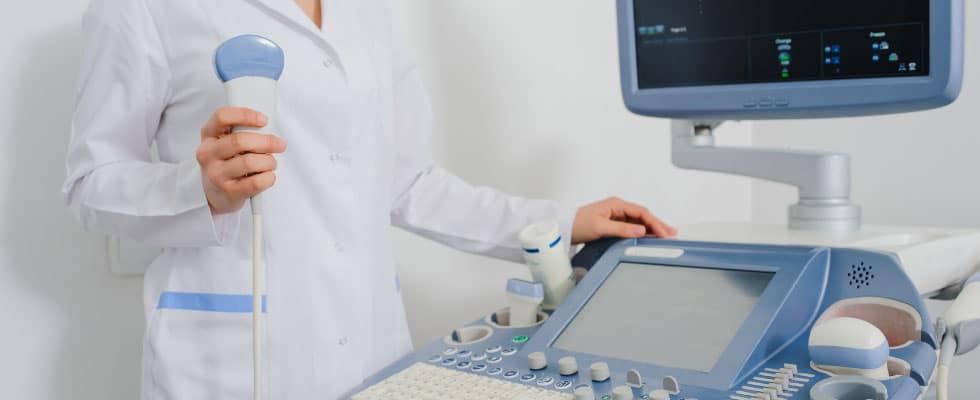
What was once considered a tool primarily for obstetrics is now being considered the new stethoscope with a wide range of uses and applications. Point of Care Ultrasound, or POCUS, can be utilized to discover patient needs and monitor their needs in almost every field of medicine. Maverick Medical Education provides medical professionals with this specialized training. Once the basics of POCUS are learned, there are immeasurable ways to apply it to your practice, like in lung ultrasound.
Why a Lung Ultrasound May be Performed
There are a number of reasons why a lung ultrasound may be ordered for a patient. Some of the most likely indicators are shortness of breath, recurring lung infections, asthma, pneumothorax, or cardiogenic pulmonary edema. One of the best features of using POCUS for lung ultrasound is the ease at which the medical team can get hour by hour data on how a patient is doing with different treatment plans. This can be especially important for patients having issues breathing or experiencing an infection in this vital organ. Medical teams around the world have applied ultrasound technology to treat patients hospitalized with COVID over the past two years.
Common Practices
Patients can either sit up or lay down – they will need to lift the arm on the same side of their body that is needing to be scanned and place it behind their head. Before any scan you are not performing regularly, you may want to take a moment to refresh your memory of important anatomy, markers, and common issues seen in patients. You will want to start by scanning the anterior chest, positioning the probe at the mid-clavicular line and the 2nd intercostal space. You will be looking for lung sliding and identifying A-lines. Next you will examine the lateral chest, looking for the same issues. Once you move to the posterior chest, you should see the liver, spleen, kidney, and diaphragm which warrant a quick check before checking for healthy lungs.
Tips and Tricks
Ultrasound is less helpful for subcutaneous emphysema because of the presence of air between the layers of the skin and in patient body habitus where obesity is a limitation. Other practices, like x-ray, will need to be used for patients with these conditions. You will also want to use ultrasound findings along with a traditional clinical exam to make a full diagnosis for the patient and to make a treatment plan that will lead to the best prognosis. There are a number of different ways to use ultrasound to diagnose lung issues, even within the same condition, so it will take practice to learn every indicator you may see on the screen when examining your patient.
To learn more about Point of Care Ultrasound and how you can use this technology in your practice, contact us today. We have the instructors at Maverick Medical Education to teach you the best methods to apply to helping your patients, and your learning can begin as soon as you register for one of our courses with our unique flipped classroom model. See our course calendar today.

